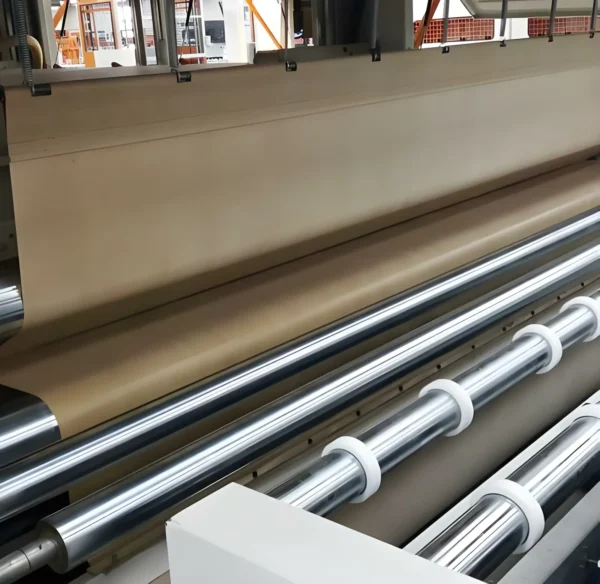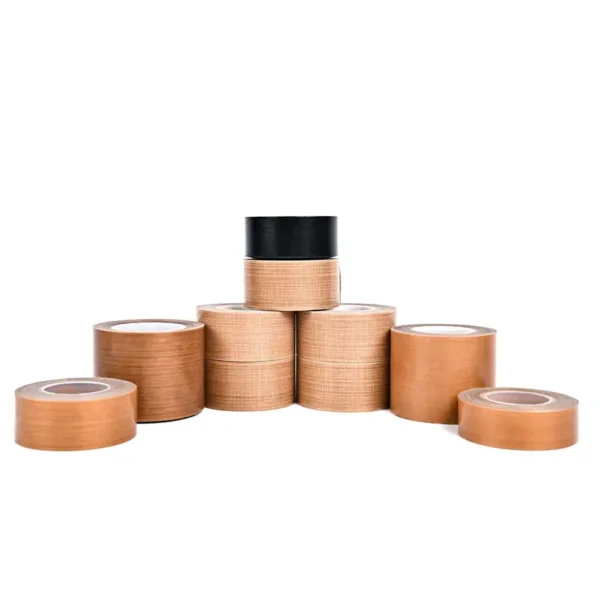When diving into the world of plastics, “nylon vs teflon” and “delrin vs teflon” are debates we often encounter. Why? Each material has unique properties that make it stand out. Let’s navigate this terrain.
Nylon: Invented by Wallace Carothers, this thermoplastic material is known for its mechanical strength. Think of it as the sturdy fabric in your backpack. It has good wear resistance, which is vital for mechanical parts that see a lot of action. However, when comparing “nylon vs teflon” or even “nylon vs delrin,” one might wonder about nylon’s heat resistance. While it’s decent, there are others that perform better in high temperature environments.
Teflon PTFE: Ever wonder why your non-stick pan works so well? Thank Roy Plunkett. He discovered Polytetrafluoroethylene (PTFE), often known as Teflon. This hydrophobic material has a low coefficient of friction, making it slick. Perfect for applications that require resistance to heat and chemical attacks. In the “ptfe vs nylon” debate, Teflon takes the cake for its dielectric strength and chemical resistance.
Delrin: When it comes to tensile strength and mechanical properties, Delrin shines. Need something wear resistant with a low coefficient of friction? Delrin is your pick. If you’re pondering “delrin vs nylon,” consider this: Delrin has better resistance to heat. Fun fact? There’s even Delrin tape available.
So, “which is harder, nylon or teflon?” Nylon generally has more mechanical strength, but Teflon PTFE boasts high temperature and chemical resistance. If you need mechanical parts or materials for applications requiring unique properties, knowing these differences is key.
Remember, the perfect choice depends on your project’s needs. Whether you’re looking for resistance to heat, wear-resistant materials, or the right coefficient of friction, understanding these plastics helps in making an informed decision. Choose wisely!
Teflon (PTFE): The Pinnacle of Chemical Resistance and High-Temperature Endurance

Navigating through the world of high-performance plastics like Teflon PTFE might throw you in the middle of debates like “nylon vs teflon” or “delrin vs teflon.” Here’s a quick guide to help you steer through.
Teflon, the brand name we owe to Chemours, stands out in the crowd. Also known as Polytetrafluoroethylene (PTFE), this material shows off when it comes to chemical resistance and withstanding high temperatures. Imagine a plastic that doesn’t melt easily – Teflon PTFE proudly boasts a melting point of 327°C (620°F)! This makes it a top pick for jobs that demand stability in fiery conditions.
But wait, there’s more. Teflon doesn’t mingle with chemicals. It stays resistant, making it a strong player in the manufacturing field, especially in producing things like gaskets and bearings. Remember its dielectric strength of 60 kV/mm? That’s why electrical insulation often chooses Teflon.
You might hear folks talk about Teflon’s “stiff neck.” Despite that stiffness, its low coefficient of friction, hovering between 0.05-0.10, is a game-changer. It slides into applications where a non-stick surface is a must, think about your non-stick pans in the kitchen.
However, when stuck in the “teflon vs nylon” or “ptfe vs nylon” debates, consider this: Every project needs its own hero. Teflon might be non-stick and heat-resilient, but would it suit applications that need adhesive bonding? Perhaps not.
Choosing the right plastic, whether that’s navigating through “nylon vs teflon” or exploring “delrin heat resistance,” means aligning the unique properties of the material, like tensile strength and mechanical properties, with the needs of your project.
In essence, while Teflon PTFE dazzles with its heat resistance and chemical inertia, your project’s specific demands should guide your material choice. It’s all about matching needs with properties. Choose smartly, and your project will thank you!
Nylon: The Paragon of High Tensile Strength and Durability

Embarking on a journey through the world of plastics brings us face-to-face with Nylon. A stalwart in the plastics industry, its durability and high tensile strength, wavering between 75-120 MPa, elevate it to a spot of great recognition.
Born from the mind of Wallace Carothers, this nylon polymer doesn’t just stand out; it practically shouts. Often found in mechanical parts like gears, bushings, and bearings, it flaunts its mechanical properties and wear resistance with pride. Especially when the discussions flip between “nylon vs teflon” or “nylon vs delrin,” Nylon makes its mark in machining projects and 3D printing, thanks to its ability to resist wear and tear.
However, every hero has a quirk. For Nylon, it’s its love for moisture. Absorbing up to 1.2% of its weight in water when soaked for 24 hours, this unique property might twist its size and shape, impacting its dimensional stability in damp spots. So, while we ponder over “which is harder, nylon or teflon,” it’s pivotal to note that in moisture-prone environments, Nylon could present a tricky variable.
Yet, don’t be swayed entirely by the “ptfe vs nylon” debates without acknowledging Nylon’s splendid versatility. From textiles to injection molding, its adaptability underpins its reliability across various industries. In comparison, factors like “delrin heat resistance” or “teflon ptfe” chemical stability may take the spotlight in some applications, ensuring each material, Nylon included, finds a place where its unique properties shine the brightest.
Remember, choosing a material, whether amid a “nylon vs teflon” debate or beyond, revolves around aligning project demands with material strengths. Nylon, with its robust mechanical strength and wear-resistant nature, certainly champions many applications, provided its moisture affinity is accounted for. Tailor your choices well, and watch your projects flourish!
Delrin (POM): The Apex of High Stiffness and Dimensional Stability

Let’s wrap our exploration with a dive into the world of Delrin, a brand name weaving its story in the domain of thermoplastics, precisely polyoxymethylene (POM).
Delrin parades its credentials with notable stiffness, impressive dimensional stability, and a low moisture affection rate. Think of it as that reliable material, especially when you need something with a backbone for your mechanical parts due to its high dimensional stability and a tensile strength that dances between 69-79 MPa. This mix of physical charm makes it a darling in scenarios requiring a mix of preciseness and rigidity.
The “delrin vs nylon” comparison often arises, especially around their relationship with moisture. Soak Delrin for 24 hours and it only absorbs 0.25% of moisture, making it a stalwart when the material’s dance with dampness is in play, and overshadowing Nylon in projects where humidity is a significant player.
In scenarios requiring a material with a steady character, especially in machining projects, Delrin steps up. Its low moisture affinity and consistency in dimensions make it stand out, often putting it on a pedestal when the “nylon vs delrin” debate surfaces.
It’s worth noting that though ETFE and PTFE both belong to the fluoropolymer family, their manufacturing tales differ. Knowledge of their production stories enlightens their respective performance traits and application avenues.
In a nutshell, while “delrin vs teflon” or “nylon vs teflon” discussions might sway you, remember: it’s all about aligning the unique properties of the material, like Delrin’s mechanical strength and resistance to wear, with your project’s needs. It’s the key to unlocking the door to a world where your projects don’t just succeed; they excel. So choose wisely, and may your projects forever thrive!
LinkCoo is a professional manufacturer of PTFE coating materials, we provide products including PTFE fabrics, PTFE tapes, PTFE conveyor belts, etc., go to our product center to learn more, or get in touch with our team, we are very happy to provide you help.




